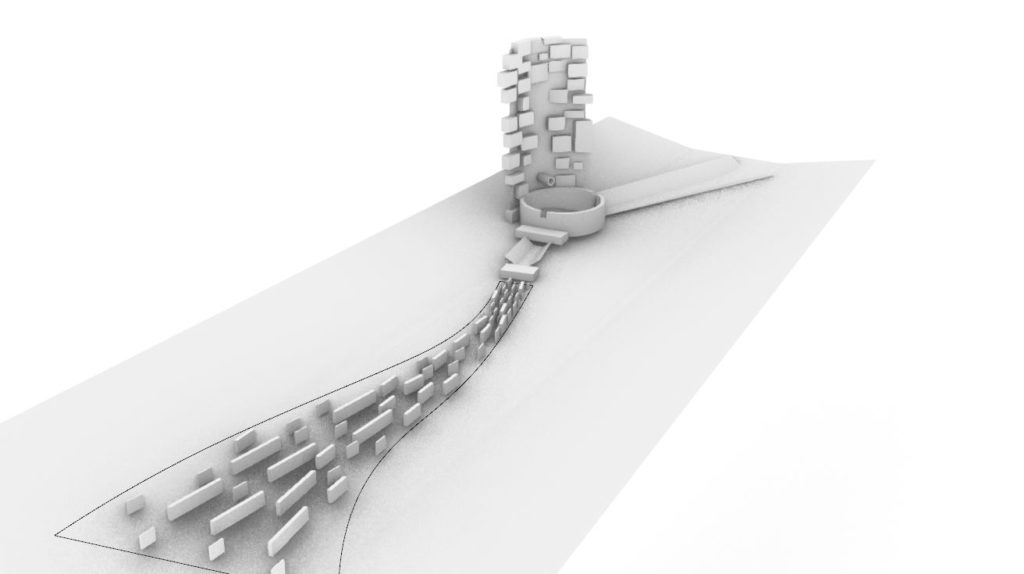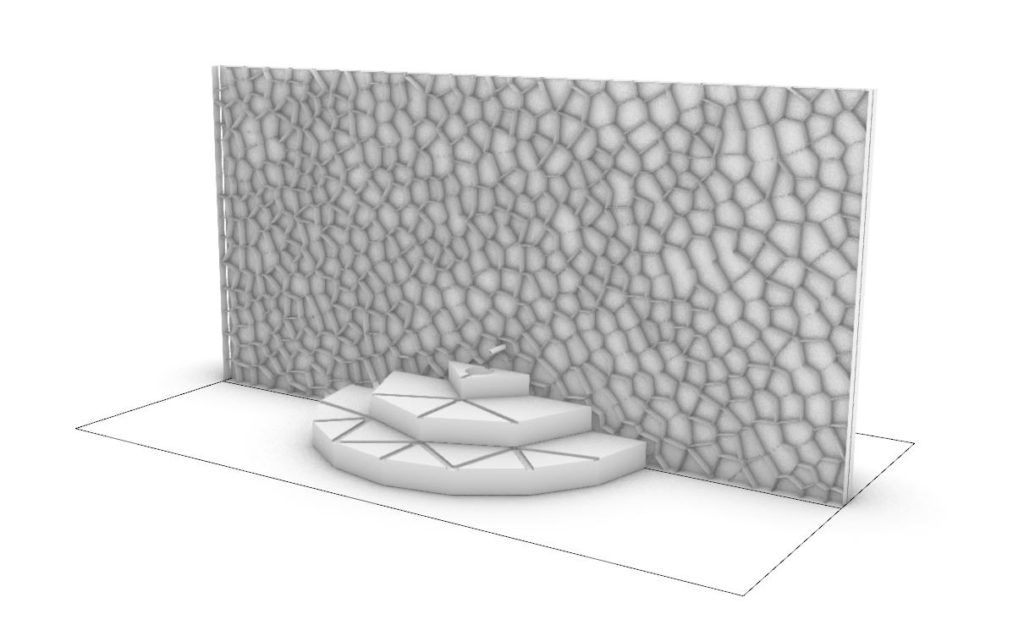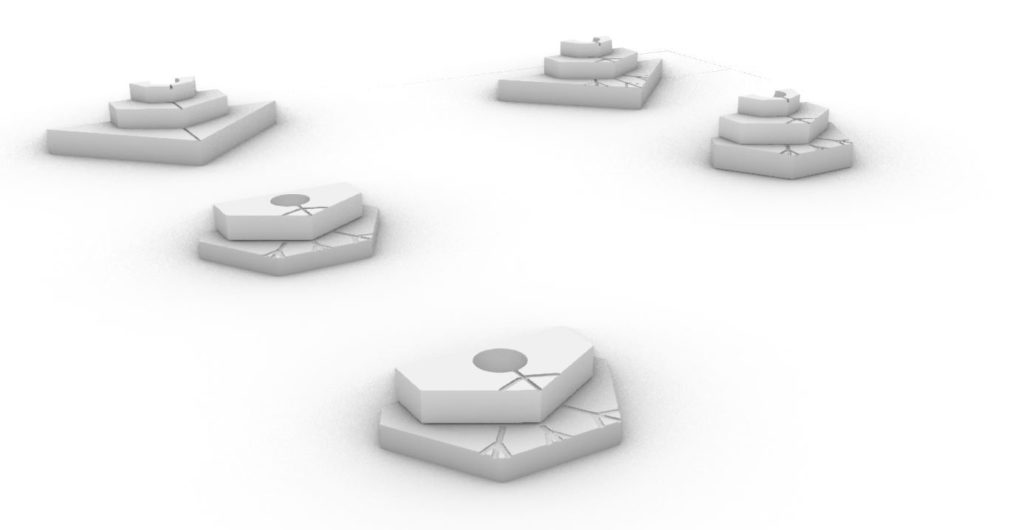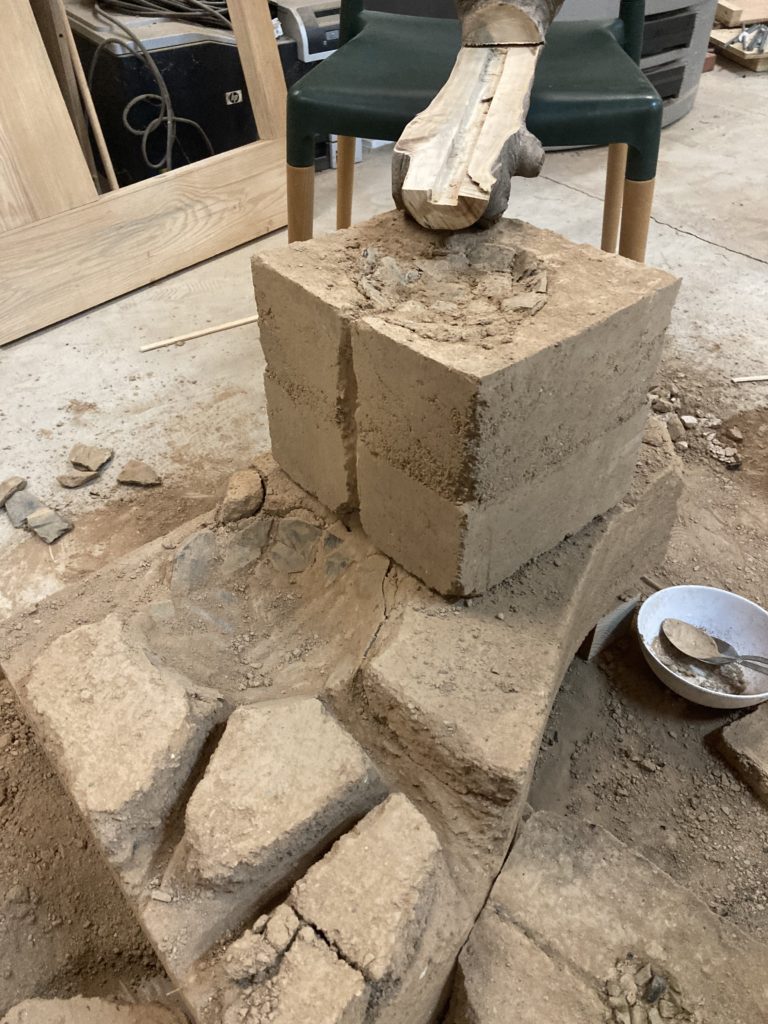3D Scan
The fountain project for Open Nature was developed through a collaboration of hands-on experimentation and computer modeling. First, to understand the site best, it was advantageous to the group to 3D scan the landscape. This allowed us to work with dimensions and positioning relative to on-site boundaries that the mountains and vegetation created. Using a DJI Mavic Air 2 drone, an iPhone plugged into the remote controller, and DroneDeploy software, it was a simple process to capture the scan.
Fountain Design Development
Initial Designs
In working closely with the Rammed Earth group, we initially worked to incorporate the rammed earth technique within the fountain basin. This would give the fountain and rammed earth a connection and similar language in the whole.


Fractal Inspiration
Together with the rammed earth group, we analyzed how fractals can be applied to our design. Fractals are commonly found in nature at different scales, and show repeating geometric patterns producing very interesting forms. A snowflake often serves as the common example for fractals appearing in nature. We applied this repeating geometric concept to both the fountain shape and the drainage flow.




Stone Designs
As other elements were added to the Open Nature master plan, it became less critical for the fountain to incorporate rammed earth, so design concepts were adjusted. We found many large stones on site, and decided to focus on the incorporation of these stones to . To have the most accurate model to work with, we measured the fountain basin on site and produced an accurate representation in Rhino. After applying the stones, the final model was produced.


